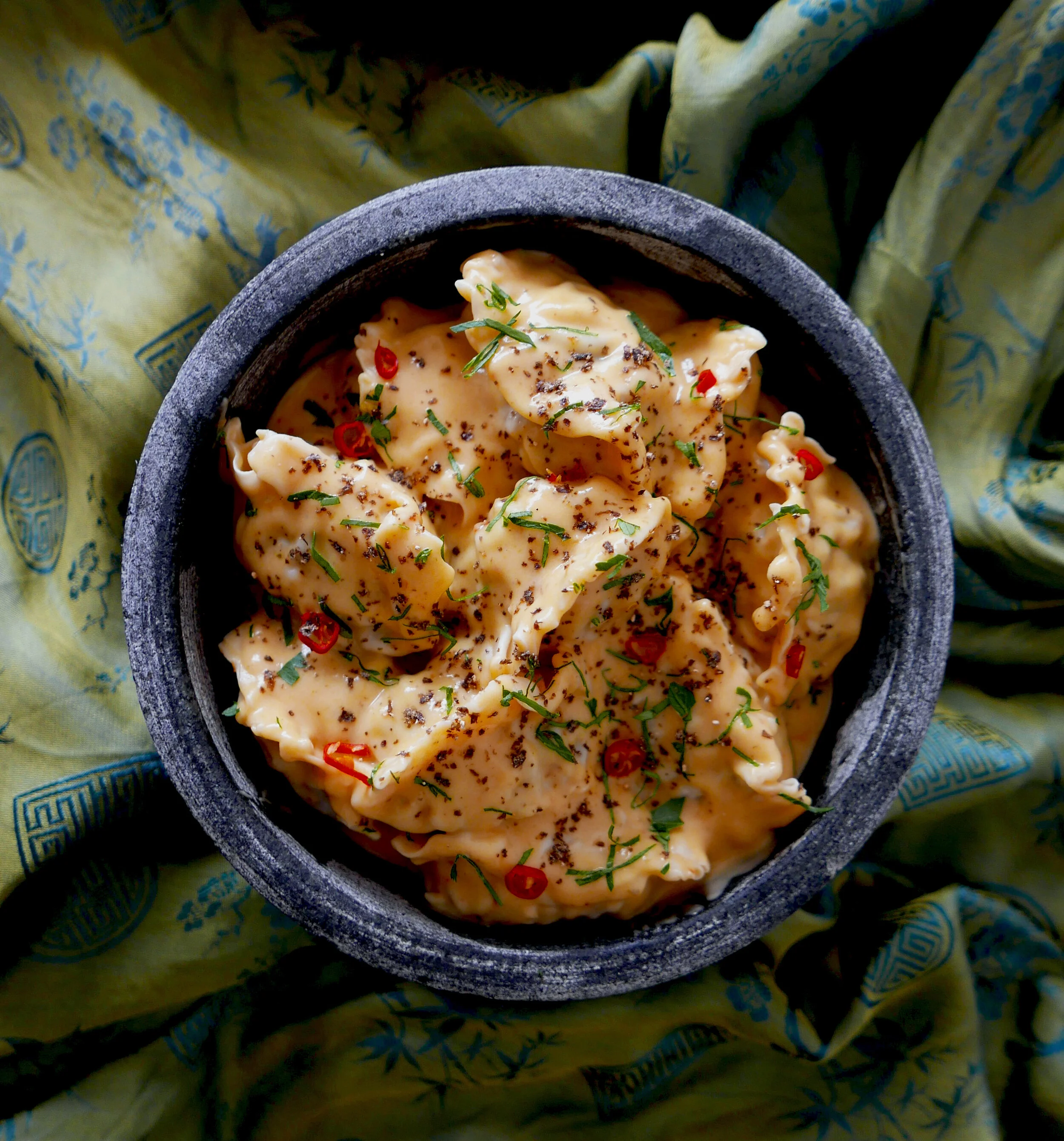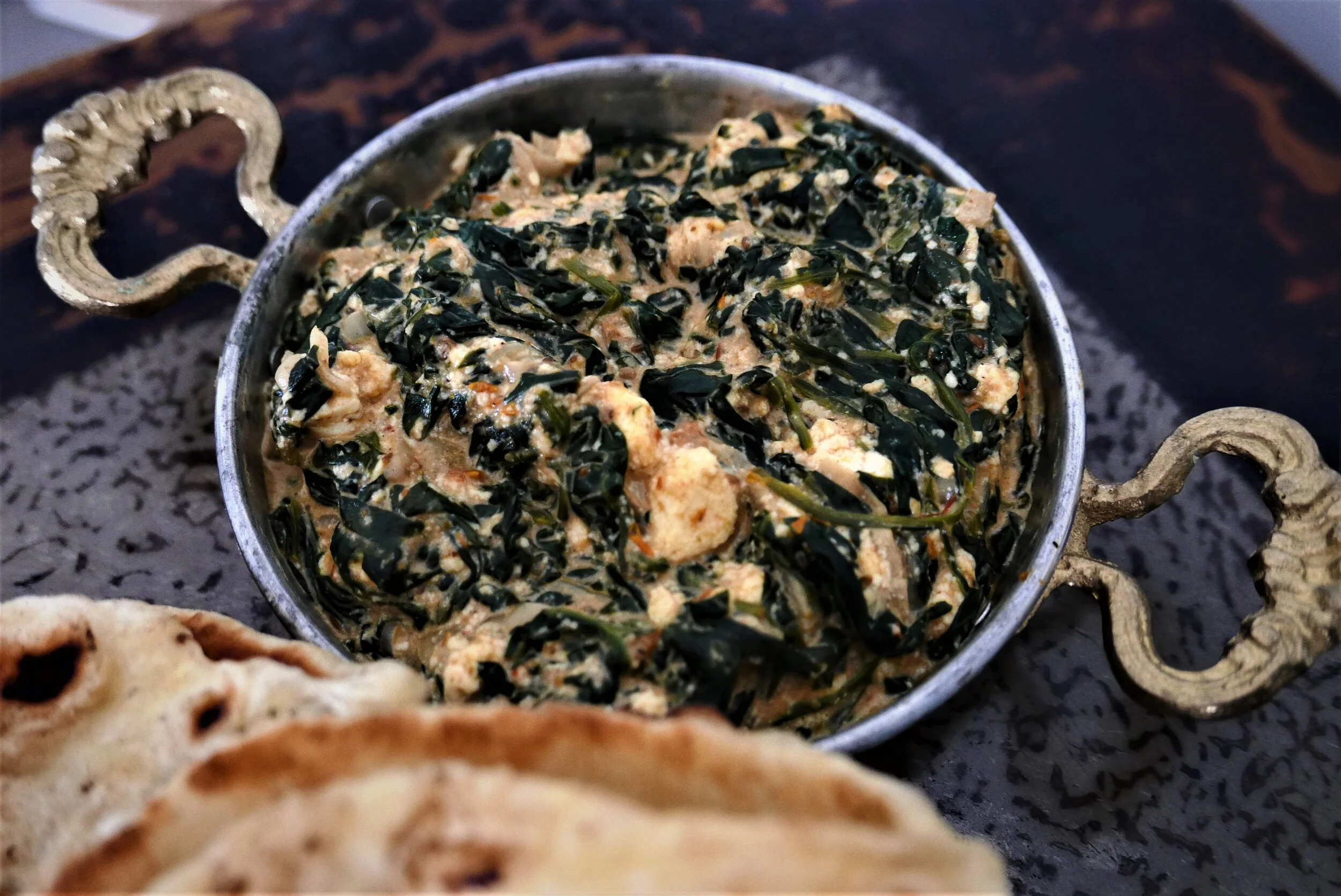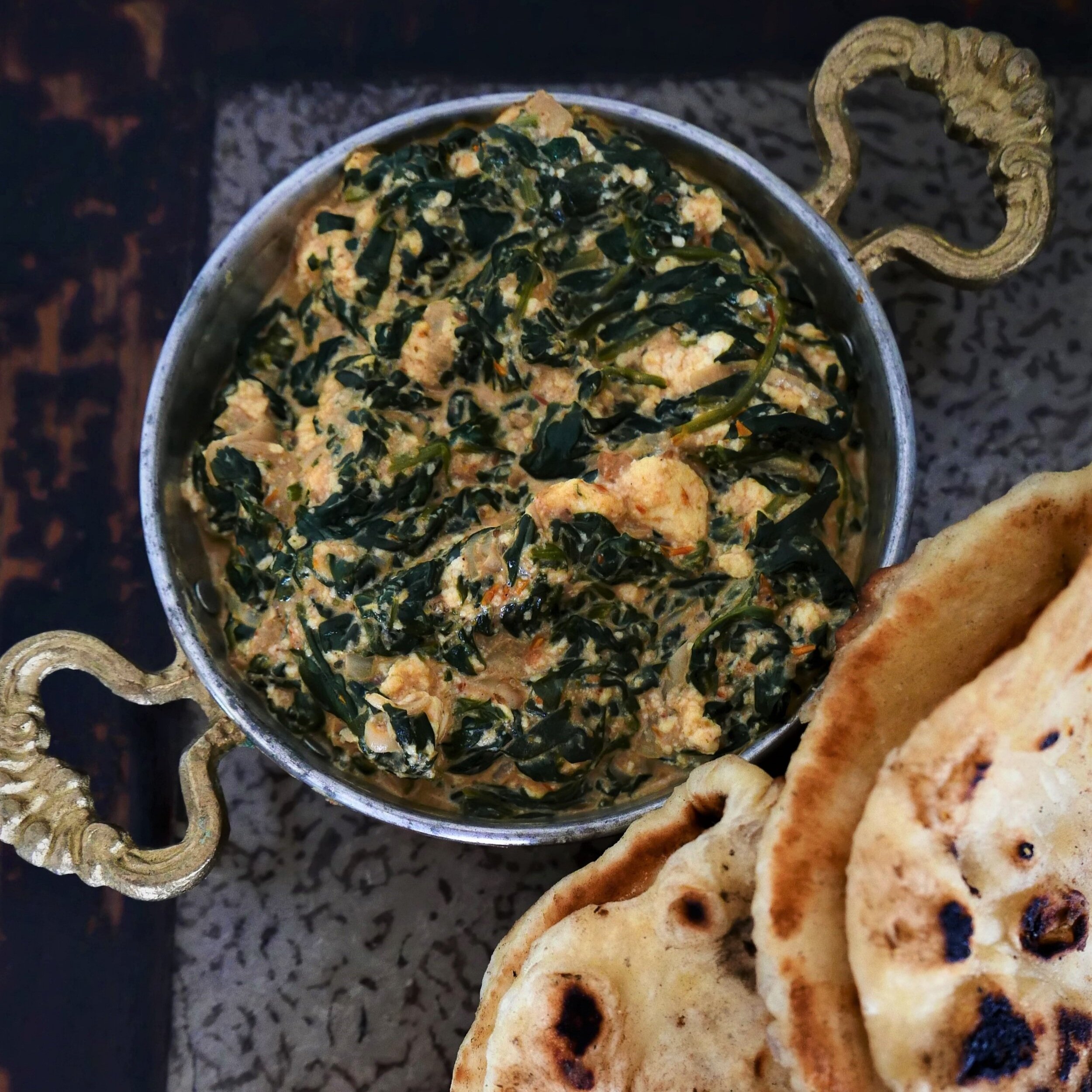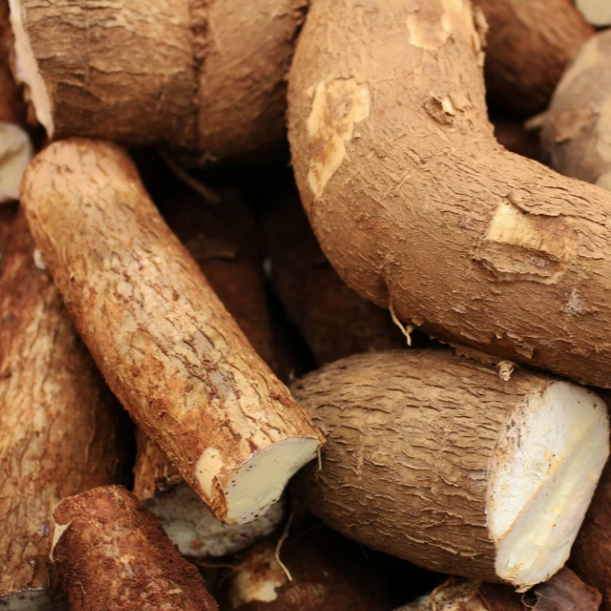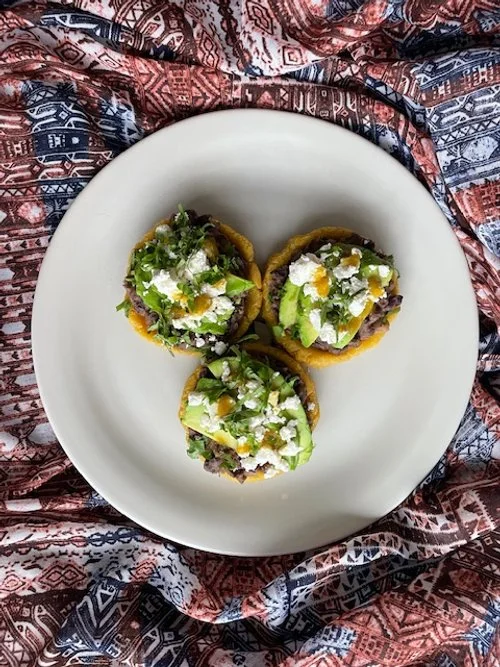explore the world through the universal language of food
Handmade Pork Dumplings with Tom Yum Bechamel
Delicious pork dumblings smothered in a tom yum bechamel.
The Recipe
Serves: 3-4 people
Preparation: 20 minutes
Cooking time: 10-15 minutes
“Dumplings can be traced back to ancient China, where they were made from a simple mixture of flour and water, and often filled with meat or vegetables.”
Tom Yum soup is a classic and this dish isn’t.
I absolutely love dumplings whether they are steamed or fried, with or without meat, and always with a delightful sauce, preferably with chilli.
Whenever I get that dumpling craving I will buy from the experts - my half-Chinese heritage is definitely halved again when it comes to cooking anything authentic from my Dad’s side. I read about it, and I try - so be nice.
In all serious (ness) this is an easy quick dish to make and can be made with dumplings you already have in the freezer.
If you have the time and nimble fingers - make the dumplings too!
THE INGREDIENTS
DUMPLINGS
300g fatty pork mince
a small thumb size piece of ginger, finely chopped
2 cloves finely chopped garlic
50g soaked and finely
20g finely chopped spring onion
1tsp white pepper
pinch of salt or a dash of soy sauce
Round dumpling wrappers
TOM YUM ‘BECHAMEL’
30g salted butter
30g plain flour
270mls coconut milk
135mls water or chicken stock
1 tsp white pepper
1-2 tsp fish sauce
1 x lime juice
80g good tom yum paste
THE METHOD
Combine all the above ingredients, except for the wrappers, of course
Lay out each wrapper, one at a time (make sure the others are covered otherwise they will dry out)
Place a generous teaspoon of the filling in the centre of the wrapper, brush one side with water and press down to make a semi-circle.
Make sure the dumpling is sealed and all the air is squeezed out.
Crimp the edges of the dumpling skin to secure the seal. I am not an expert in this but I did stumble upon this little video that shows you close up on different ways to fold your dumplings.
Once they are all crimped to your liking, set aside and make Tom Yum ‘bechamel’.
While making the bechamel have your steamer ready to pop in the dumplings as soon as the sauce is almost done.
Heat the butter in a saucepan on a medium to low heat. When it has melted, add the flour and stir for a few minutes.
While stirring, add the coconut milk gradually and then the water/stock.
Once the sauce is smooth and can coat the back of a spoon, whisk in fish sauce, tom yum paste and lime juice.
Adjust the seasoning as your heart desires.
When the dumplings are done, stir through the sauce carefully and garnish with chillies, coriander and nori salt.
Easy!
Chunky Palak Paneer with Stove Top Naan
The Recipe
Serves: 4 people
Preparation: 15 minutes
Cooking Time: 30 minutes
Eating Time: depends on how hungry you are
“Possibly of North Indian origins, palak paneer is a dish supposedly developed by Mughals, a powerful Muslim dynasty that ruled over parts of the Indian subcontinent from the early 16th century to the mid-19th century.”
Indian food. I crave it. Often.
Especially my all time favourite dish - Palak Paneer.
Palak Paneer is originally a Punjabi vegetarian dish but is now found in variations all over India. It is a spinach curry dish with tomatoes, a mix of spices, onions and paneer (a simple rennet free cheese). You can find my paneer recipe here - it takes but a moment to make and just needs to be strained and pressed over night. If you don't have the time or can't find paneer at your local market, cottage cheese will do the job just fine.
Rather than blending the spinach like a curry, how it usually comes, I have actually left it chunky so it is like a thick stew. Team it with some simple naan bread (it's so easy to make from scratch!) and you have your Indian food cravings sorted.
INGREDIENTS
PALAK PANEER
600g baby spinach
4 tbsp vegetable oil
½ tsp cumin seeds
1 tsp fenugreek
1 tsp chilli powder
1 tsp ground turmeric
2 tsp garam masala
120g / 1 yellow onion, finely sliced
20g / a thumb sized piece of ginger, peeled
20g / 3-4 cloves of garlic, peeled
100g / 1 tomato
80g/ 4tblsp cream
2 tbsp lemon juice
150g paneer
STOVE TOP NAAN
3g/1 tsp instant yeast
180mls/ ¾ cup warm water
7g / 2tsp caster sugar
¼ tsp baking powder
300g plain white unbleached flour
2 tsp fine sea salt
15g/ 2.5tsp olive oil
50g/ 3tblsp yoghurt
METHOD
Grind the spices until fine, set aside
In a food processor blend the tomato, garlic and ginger until it resembles a nice smooth paste
In a large saucepan, bring salted water to the boil and have a bowl of iced water on stand by
Drop spinach into the boiling water for about 10 seconds until blanched, immediately drain and
place into the ice water to stop the cooking process and to retain the vibrant green
In a medium saucepan, heat the oil and fry the onion until translucent
Add in the garlic, ginger, tomato and spices
Finally add the cream, lemon juice, spinach and cook for another 10-15 minutes
When the ingredients are combined and fragrant, crumble in the paneer and mix through
Place the water, sugar, and yeast into a bowl and allow to sit for 10-15 minutes
In a separate bowl, sift the flour, salt, and baking powder
Mix the yeast mixture with the dry mixture. Add in olive oil and yoghurt
Knead for 10-15 minutes until the dough is pliable. If the mixture is too sticky you may add a small sprinkling of flour
Place in a well-oiled bowl and wrap with cling film
Allow the dough to double in size in a warm environment for about 2 hours
When the dough is ready, roll it out onto a floured surface. Shape out into rounds or teardrop shapes that are about 1 cm thick
Heat a frying pan – for the best-charred results a cast iron pan works like a dream
In the smoking hot pan, add a little oil and cook the dough, the bread will bubble and have charred spots on it. It shouldn’t take any longer than 30 seconds on each side of the bread to cook
Before adding the next piece of dough, lightly oil the pan again.
When all the bread has been cooked – it is time to dig in!
Tear the naan into pieces and dip it into the deliciously fresh, made-from-scratch palak paneer.
Nasi Lemak for $25
The Recipe
Serves: 8 people
Preparation: 2 hours
Cooking Time: 1 hour
My version of Nasi Lemak is not traditional in any sense but has the elements of coconut rice, fried chicken, otah, fried egg, and ikan bilas. It was sold for $25 and also had a palate cleanser.
There is a lot surrounding hawker cuisine as Singapore aims to become a cuisine listed on the UNESCO intangible heritage list. The fact of the matter is that hawker food is part of the Singaporean culture but not everyone wants to take on their parents stalls and hence, famous stalls are now closing and becoming a distant memory. However, fear not as bright young things are setting up small restaurants and alternative hawker stalls as an ode to Singaporean cuisine. This is definitely the way forward.
Although I am not Singaporean I do admire the sense of diversity this little island holds. Such a plethora of cuisines available at any time of the day.
Once upon a time I was in a little TV show and had the honour of spending a day with the people at Nasi Lemak Kukus which have now unfortunately ceased operation.
My version of Nasi Lemak is not traditional in any sense but has the elements of coconut rice, fried chicken, otah, fried egg and ikan bilas. It was sold for $25 and also had a palate cleanser.
So…. here is the recipe and if you dare to try it, let me know how you go, just be prepared for the short novel below!
CUCUMBER PANDAN GRANITA
400g Japanese cucumber
10g pandan leaves
40g calamansi juice (160g of calamansi)
*microplane 2 for the rinds in the anchovy crumb
45g icing sugar
20g pandan syrup*
GARNISH
pandan leaves – cut into thin strips (35)
8 calamansi chips (these will be dehydrated over 2 days)
When frozen, place in 35 glass jars ready for service.
Top with calamansi when taken out of the fridge.
*PANDAN SYRUP – Makes about 55g
5g pandan leaves
55g white sugar
105g water
IKAN BILAS CRUMB
30g dried anchovies (fried)
30g grounded peanuts
2 calamansi skin, microplaned
30g anchovy puffed black rice
ANCHOVY PUFFED RICE
30g black rice
10g dried anchovies/ikan bilas
530mL water
1g sea salt
PANDAN INFUSED COCONUT RISOTTO
120g white onion, finely chopped
10g peeled garlic, finely chopped
360g arborio rice
36g extra virgin olive oil
60g butter
1800g water
240g coconut cream
25g pandan leaves
15g chicken stock cubes
Sea salt
PANDAN POWDER
Using the strained pandan from the cucumber pandan granita, place in a dehydrator fo 1-2 days
Blend thoroughly to a fine powder
Place In a metal cocoa shaker for service
SAMBAL BELACAN
25g belacan
140g fresh red chillies
64g dried red chillies (chilli paste)
95g peeled shallots
32g peeled garlic
12g prawn powder
10g peeled galangal
160g water
65g vegetable oil
12g palm sugar
3.5g calamansi juice
Apple cider vinegar (to taste)
Xantham gum
CHILLI PASTE
Cover chillies with hot water
Soak for 30 minutes or until they are soft
Drain and blend
Place in a small bowl and put aside
SOUS VIDE EGG
10 eggs
Place in water bath at 64’C
Cook for 45 minutes
Hold at 40’C
*cook just before service and test
OTAH SPICED CHICKEN BALLOTINE
Chicken
1.2kg chicken thigh, bone out, skin off
*each thigh should weigh about 150g each.
Vegetable oil – for frying
Trim chicken and set aside trimmings to blend
Flatten out chicken thigh
Season with salt and pepper
Otah - Spice
10g belacan, toasted
12g lemongrass
10gg peeled galangal
10g fresh turmeric
8g peeled garlic
20g peeled shallots
32g fresh red chillies
40g water
OTAH - CUSTARD
1g kaffir lime leaves, finely chopped
1 x egg
2g rice flour
1.2g sea salt
2g white sugar
40g coconut cream
Whisk together and set aside
26g extra rice flour
Combine in a large bowl
OTAH - FILLING
80g soaked anchovies, water drained
Chicken trimmings
Blend with a bit of the anchovy water and set aside
Finely blend spice ingredients
Add to the custard mix
Whisk ingredients together
Add this liquid to the anchovy/chicken paste to form a paste
Place paste along the chicken thigh. Roll in cling film and seal tightly
Poach for 15-20 minutes in boiling water. Set aside. Cool slightly
Reserve the rest of the liquid for batter
Add rice flour to form a fluid batter. Dip in batter and fry.
Dip chicken into batter and lightly coat. Fry until golden
Keep at room temperature for service
Slice in 1 cm slices for plating
TO PLATE
Throw a bit of sambal on the plate
Place coconut risotto slightly off-centre on the plate using a small bowl mould.
Make a little well on top and crack the egg into it
Place sliced ballotine pieces on the plate (4-5)
Garnish with fresh cucumber ribbons
Top the egg with the ikan bilas crumb
Dust with pandan powder (dehydrated pandan leaves from the palate cleanser)
SEE - EASY!!!
Miso Risotto with Peas & Shiitake Mushrooms
The Recipe
Serves: people
Preparation: 20 minutes
Cooking Time: 30 minutes
This dish conjures up a unity of flavours and ingredients from two different parts of the world, however its flavour profile is familiar to both cultures. Japanese miso meets Italian rice. My apologies in advance if I have offended either of these countries – this dish just seems to make sense.
This dish conjures up a unity of flavours and ingredients from two different parts of the world, however its flavour profile is familiar to both cultures. Japanese miso meets Italian rice. My apologies in advance if I have offended either of these countries – this dish just seems to make sense.
It was spurred on by my flat mate, an enthusiastic cook who loves to try new dishes. “Jen, I have just bought a shitload of miso paste – can you write a few recipes on how to use miso that isn’t exactly Japanese???” Krissy. This one is for you.
So, the two important ingredients from two different cultures are miso and Italian rice. Miso encapsulates the very essence of Japanese cooking with an undeniable umami taste.
Umami: “it is usually so faint and overshadowed by other stronger tastes that it is often difficult to recognize it unless attention is specifically directed towards it” Dr. Kikunae Ikeda
Dr Ikeda discovered the amino acid glutamate through many experiments on Konbu, isolating certain compounds by means of evaporation. Umami is found naturally in food such as mushrooms, Parmesan cheese, fermented and cured food products – just to name a few. It is a taste that has existed for many years and although its’ discovery was in the early 1900’s, it took a little over a century to be officially recognized as the fifth taste, adding to sweet, sour, spicy and bitter.
Now rice – in particular rice for making risotto, you will find more about it here.
This recipe can be made in advanced and cooked until the grains are al dente. When it is time to serve guests, add a little water and mix through to heat up the risotto.
The garnish is not essential but dresses up the dish and makes it look that little bit more special.
INGREDIENTS
350g/2cups Arborio or Canaroli Rice
20g butter
A good glug of extra virgin olive oil
140g/1 x Medium onion
10g/1-2 cloves garlic
900mls boiling water
80g/4tblsp miso paste
200g/1.5 cups green peas (fresh or frozen)
150g fresh shitake mushrooms
50g grated parmesan cheese
white and black pepper
Garnish
1 sheet of nori
2-3 radishes
Parmesan cheese
Extra virgin olive oil
METHOD
Finely chop onion and garlic – set aside
Roughly chop the mushrooms as well and set aside
Mix the miso paste and boiling water in a litre jug until the miso has dissolved
In a medium heavy base saucepan, fry onions in oil and butter on a medium heat, when the onions are soft, add in the garlic and then the UNWASHED rice. Mix until all the grains are nicely coated with the buttery oil mixture and the lovely smell of garlic wafts around your nostrils.
Add in the chopped shitake mushrooms.
Now you can add some of the miso stock, 100 mls at a time, mixing the rice constantly until all the grains have absorbed the liquid.
Before the last 200mls of miso stock need to be added, throw in the peas. They won’t take long to cook and we want them looking vibrant and green in our dish!
When all the liquid has been absorbed (you will need to use your instincts here and may need to add more liquid, depending on how well cooked the rice is or not.)
Mix through the grated parmesan cheese, add black and white pepper to taste and a little salt if your palate calls for it.
Plate up the risotto warm and garnish with finely sliced red radishes, nori, grated parmesan cheese and a dash of extra virgin olive oil.

